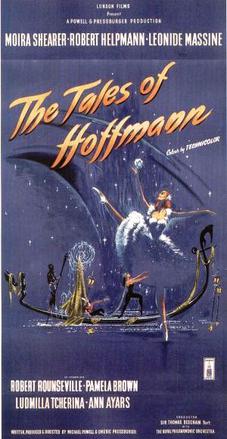Pages
▼
Friday, October 16, 2015
The Tales of Hoffmann (Michael Powell and Emeric Pressburger, 1951)
Opera and film are two well-nigh incompatible media, with different ways of creating characters, evoking mood, and telling stories. The handful of good opera films are those that find ways of replicating the operatic experience within a cinematic framework, the way Ingmar Bergman does in his film of Mozart's The Magic Flute (1975), which takes liberties with the original libretto and casts the action in a theatrical setting. The Powell-Pressburger Hoffmann also tinkers with the libretto, and with perhaps somewhat more justification: Offenbach didn't live to see his opera performed, and it exists in several variants. Opera companies rearrange and cut its various parts, and even interpolate music from other works by Offenbach. Like The Magic Flute, Hoffmann has fantasy elements that lend themselves to the special-effects treatment available to the movies, and Powell and Pressburger took full advantage. It is usually thought of as a companion piece to their film The Red Shoes (1948), in large part because it used many of the stars of that earlier film, including Moira Shearer, Robert Helpmann, Léonide Massine, and Ludmilla Tcherina, as well as production designer Hein Heckroth. The opera is sung in English, though the only singers who actually appear on screen are Robert Rounseville as Hoffmann and Ann Ayars as Antonia. Unfortunately, some of the singers whose voices are used aren't quite up to the task: Dorothy Bond sings both Olympia and Giulietta, and the difficult coloratura of the former role exposes a somewhat acidulous part of her voice. Bruce Dargavel takes on all four of the bass-baritone villains played on-screen by Helpmann, but his big aria, known as "Scintille, diamant" in the French version, lies uncomfortably beyond both ends of his range. Rounseville, an American tenor, comes off best: He has excellent diction, perhaps because he spent much of his career in musical theater rather than opera -- though he originated the part of Tom Rakewell in Stravinsky's The Rake's Progress in 1951. He is also well-known for his performance in the title role of Leonard Bernstein's Candide in the original Broadway production in 1956. It has to be said that the film is overlong and maybe over-designed, and that it sort of goes downhill after the Olympia section, in which Heckroth's imagination runs wild.
Charles Matthews
